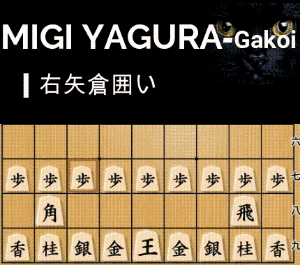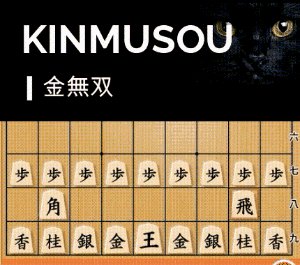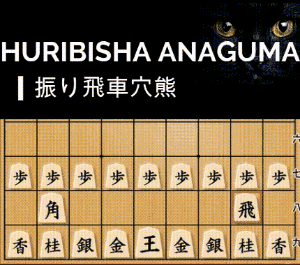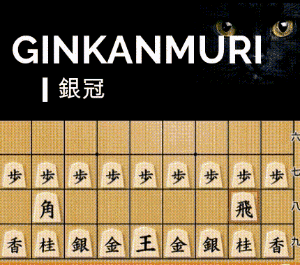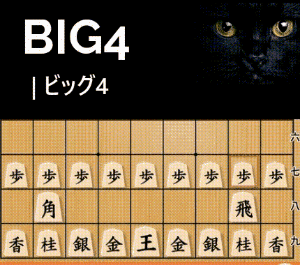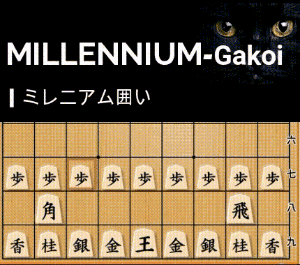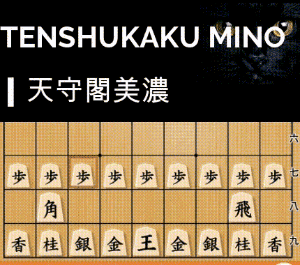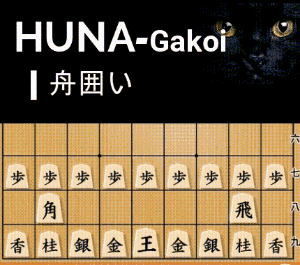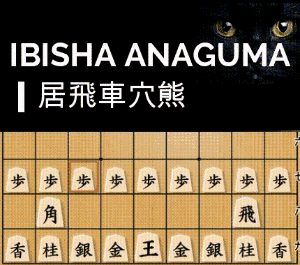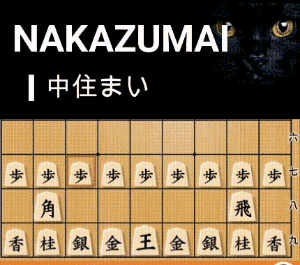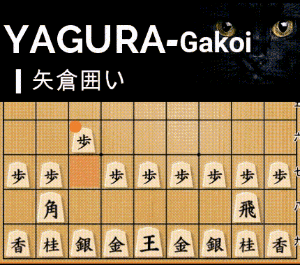Early 4th File Pawn Push – Counterplay Against the Ranging Rook
The Early 4th File Pawn Push is an aggressive strategy used by Static Rook players when facing the Ranging Rook (especially the 4th file Rook). This approach works effectively against the 4th File Rook opening, which is popular among amateurs and frequently encountered in online games.
Setting Up the Early 4th File Pawn Push vs Ranging Rook
Let’s take a look at the initial moves for both players when you are using the Static Rook setup and your opponent plays the Ranging Rook.
- Opening: If your opponent closes the diagonal of their bishop early, they are likely setting up a Ranging Rook strategy, so it’s important to be prepared for that.
- Initial Positioning: Start by developing your silver (moving it forward), which is a safe move whether your opponent plays Static Rook or Ranging Rook. It’s a flexible opening that doesn’t lose any tempo.
- Opponent’s Setup: If your opponent sets up the Fourth File Rook, you can now move on to counter their strategy by setting up a solid defensive formation, like the Boat Castle, which is highly effective against the Ranging Rook.
When playing against a Ranging Rook, you’ll often encounter the Mino Castle defense. The goal here is to disrupt the opponent’s Rook and break through their defenses using strategic pawn pushes and silver movements.
How to Attack with the Early 4th File Pawn Push
- Step 1: Pawn Push to the 4th File
- As the name suggests, the first move is to push your pawn to 4-5. This puts immediate pressure on the opponent’s Rook setup. If your opponent takes the pawn, you can advance further with 3-3 Bishop and break through their defenses.
- Step 2: Develop Your Knight
- Before pushing more pawns, it’s crucial to develop your knight. Use this time to solidify your position while your opponent focuses on defending their Rook setup.
- Step 3: Sacrifice the Pawn to Open the 2nd File
- Now, you can push the 2nd File Pawn to start a series of attacks. Your opponent has a couple of options here, either to capture your pawn or to move their bishop.
Two Possible Scenarios: How to Proceed After Opponent’s Response
Scenario 1: Opponent Takes the Pawn
In amateur games, it is quite common for the opponent to capture with a Pawn. If they respond this way, the Static Rook player should aim for a Bishop exchange and then break through their opponent’s defense.
- Opening the Diagonal for a Bishop Exchange
By playing Pawn to 4-4, you open the diagonal and prepare for a Bishop exchange. - Bishop Exchange and a Follow-up Drop
Once your opponent moves their Silver, exchange Bishops. After the exchange, drop your Bishop back into play before proceeding with the Rook’s attack. The Ranging Rook side will have difficulty dealing with this Bishop. - Breaking Through with the Rook
If you successfully break through with your Rook, you will gain a strong advantage. From here, you can aim for Rook Promotion to 2-2 followed by Bishop Promotion to 3-3, or you can use Knight to 4-5 to capture the Silver and strengthen your attack.
Scenario 2: Opponent Takes with the Bishop
Next, let’s consider the case where your opponent captures with their Bishop. This sequence includes many complex variations, and if you are unfamiliar with them, they can be quite challenging to play correctly.
When the Ranging Rook side moves their Bishop forward, it escapes from the diagonal where a Bishop exchange was possible.
- Forcing the Opponent’s Rook to Move
Playing Pawn to 4-4 is a natural move, but after capturing the Pawn, sacrifice it again by dropping it in front of the opponent’s Rook. This sequence involves many intricate variations that require precise calculation. - The Bishop Fork on the Rook and Knight
A well-placed Bishop drop can threaten both the opponent’s Rook and Knight simultaneously. This move seems to give a clear advantage to the Static Rook player, but the Ranging Rook side has a clever defensive resource. - The Opponent Traps Your Horse
If your opponent counters with a well-timed Rook drop in their own camp, your Horse may get trapped. From this point, how should you continue? - The Goda New Move: Pawn to 9-5 (Forcing a Pawn Exchange to Strengthen the Attack)
Dropping Knight to 3-3 allows you to protect your Horse while also attacking the opponent’s Rook. If they try to escape with Rook to 5-1, it may seem like you are out of attacking options. However, playing Pawn to 9-5 is a brilliant move.
💡 The idea is to force a Pawn exchange on the edge and use the extra Pawn to drop Pawn to 4-3, creating new attacking chances.
This move was discovered by Masataka Goda, a renowned professional player, and is known as the “Goda New Move.”
If the game continues with Pawn to 9-5 → Lance Takes 9-5 → Pawn Takes 9-5 → Pawn to 4-4, the Ranging Rook side will be caught in a Rook and Silver Fork, giving the Static Rook player a decisive advantage.
Conclusion: Taking Advantage of Weaknesses
By executing the Early 4th File Pawn Push, you’re applying constant pressure on your opponent’s defenses, taking advantage of the Ranging Rook’s weaknesses. Remember, while the sequence of moves can vary, the core idea is to aggressively push forward and challenge their formation early. Whether they capture your pawns or retreat their bishop, you will always be prepared to strike back and gain the upper hand.
Good luck and enjoy exploring this powerful counterattack!




